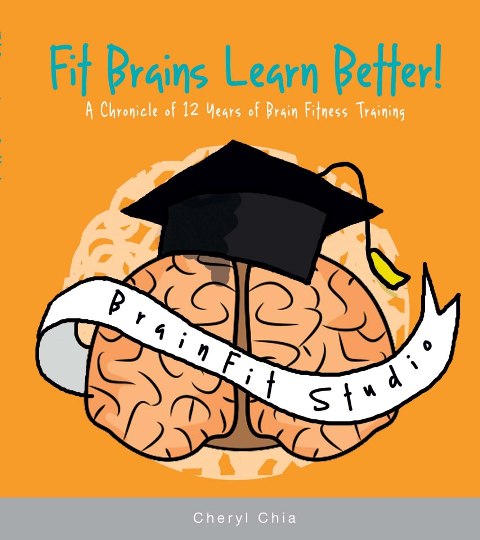I received Fit Brains Learn Better is a book when I went to see the BrainFit Studio in Greenhills. It’s an easy to read book that I finished reading for over an hour while waiting for my next meeting. Fit Brains Learn Better is written by Cheryl Chia, a Pediatric Physiotherapist and Founder and Director of BrainFit Studio. The book chronicles 12 years of brain fitness training. It is about how the brain works and what activities we can do to keep out brain healthy and accelerate learning.
It discusses that there is much more about the brain than just the left and right side. It has 5 important pillars – Social-Emotional Functioning; Attention and Memory; Auditory and Language Processing; Visual and Spatial Processing; and Sensory-Motor Coordination. These 5 systems are important because whether you are solving a Math problem, play a musical instrument or learning to play a sport, all together, they form the foundation of the “engine for learning”.
Here are the 5 brain pillars and what their functions are:
Social-emotional system or the Limbic system, is the part of the brain that causes us to develop feelings and attitude towards an activity or person.
Attention System or the Frontal Lobe, helps us to remain focused on a task, filter unnecessary and unimportant information so we will not get easily distracted. It also helps us control our impulses so that we do not rush into doing a task without first thinking what are we going to do.
Auditory System or the Temporal Lobe process the sound information in the brain. It allows us to recognize different intonation patterns to help us learn not just the sounds of the language but also what it means. It also helps us interpret the mood or a person just from the intonation of the voice.
Visual System or the Occipital Lobe is the part of the brain responsible for interpreting and understanding the information on what we see with our eyes. It helps us to interpret “b” or “d”, “6” or “9” accurately so we do not get confused. It helps us to judge lines and spaces enabling us to write neatly on a line or draw a diagram without error. The eye movement and coordination skills are needed for us to process information correctly. This system works closely with the Auditory System and as they say, this is arguably the most important brain system of all.
Sensory-motor System or the Parietal Lobe of our brain helps us sit upright in your chair without falling over. It is the same part of the brain that allows you to control a pencil in your hand effectively when you write or draw. The body sensors, that provide the brain feedback so we can use the right amount of force and correct movement patterns, include the sense of touch, balance and joint position awareness.
The last three chapters of the book talks specifically about brain fitness for students with learning disabilities, babies and seniors.
For children with learning difficulties, they should not be misunderstood as dumb or lazy. Learning and understanding the relationship between learning difficulties and how the brain works can help these children get the necessary ways to strengthen their brain health to reduce or even overcome learning challenges.
For babies, studies show that early experiences are literally brain-shaping. This means that listening, language and reading skills, attention span, motor skills and emotional responses can all be shaped and strengthened from the moment the baby is born. Indeed, parents are the first and best teacher!
For adults and seniors, this is such good news. Research has shown that exercising the brain can improve brain health and mental performance. Learning a new skill such as a new language, learning to cook, playing a musical instrument or a dance challenges the brain to make new connections and maintain its fitness. It helps sharpen the attention, work the memory and build motor coordination keeping the brain in top form.
What I like best about the book is, it provides practical tips and what parents and adults can do to strengthen each of the five brain systems. The tips are easy to incorporate in daily routines and it provides bonding activities for parent and child.
Without Brain fitness, the crucial brain foundations, learning is impossible. Understanding how fit brains are can help us to better appreciate the strengths and weaknesses in our children and even our own. Brain fitness training is very much like the physical fitness training, which we are more familiar – effort is needed for gain to be seen or realized. Brain fitness is not about turning a child into a genius but it can bring out the maximum potential, whatever it may be.
Check BrainFit Studio, their branches and contact numbers in the Philippines.






13 comments
Pingback: Foods To Help Keep Brains Healthy | Infographic - Life of Que